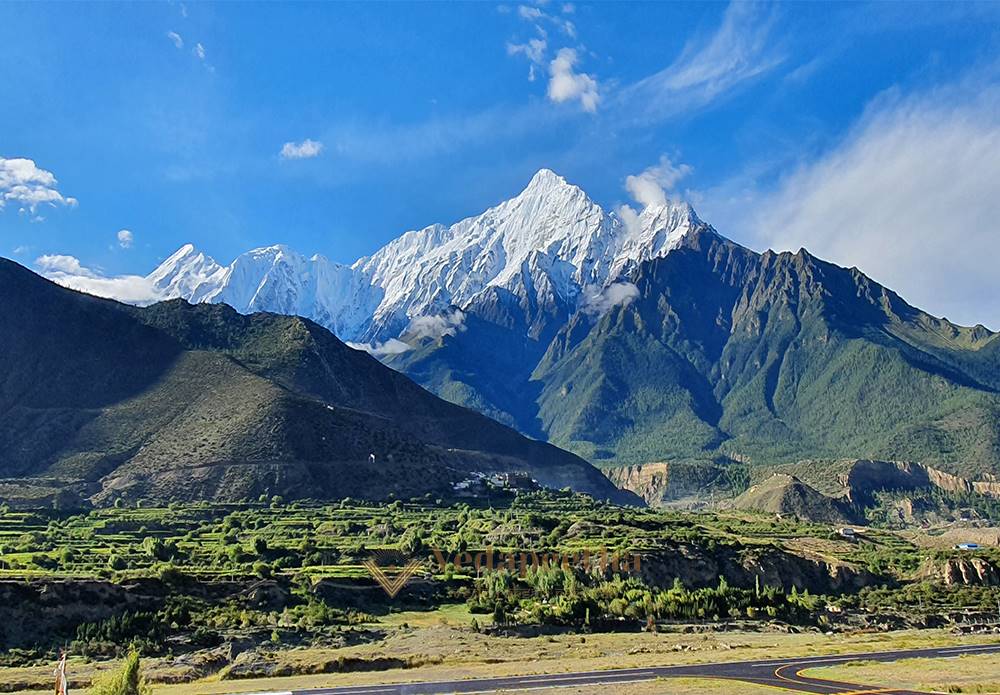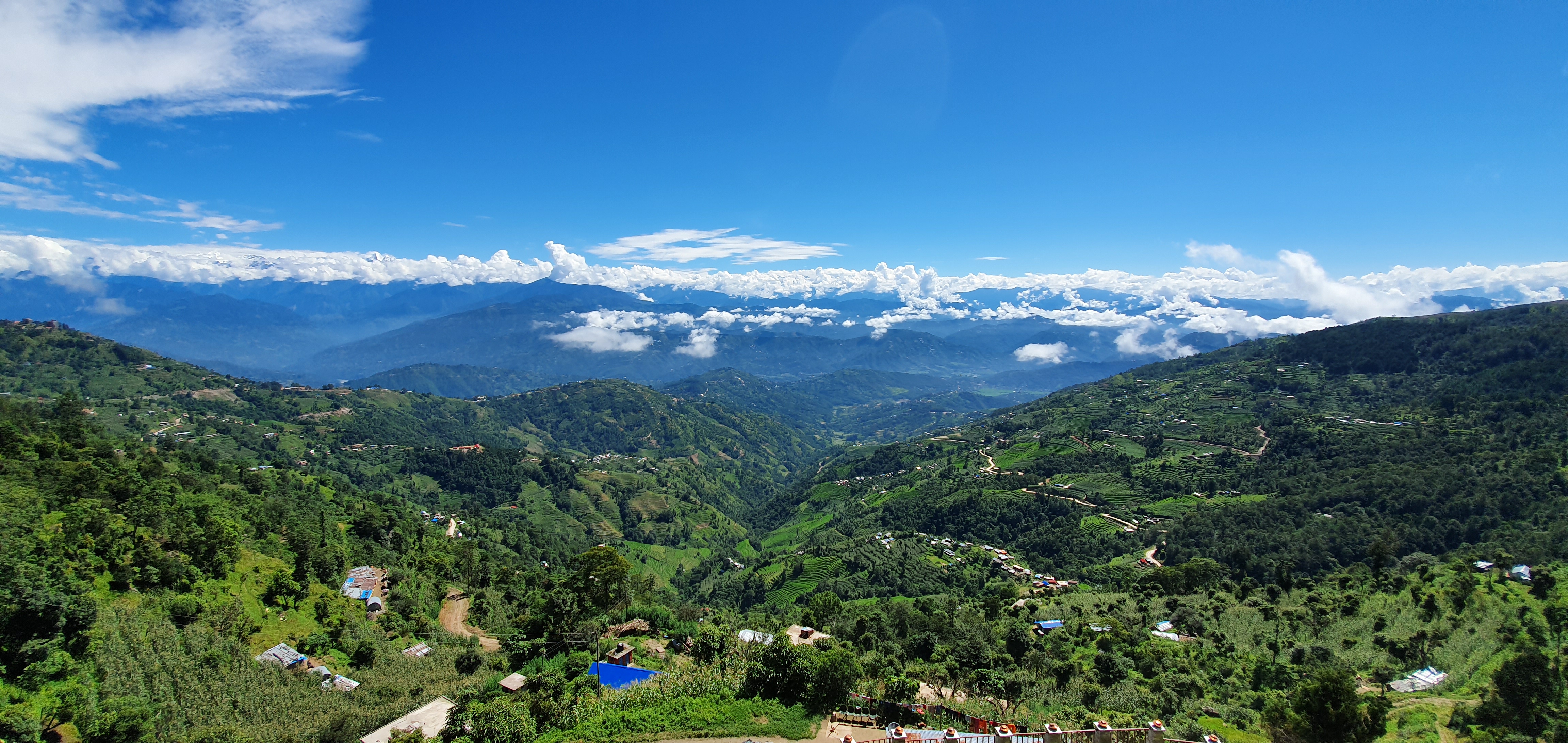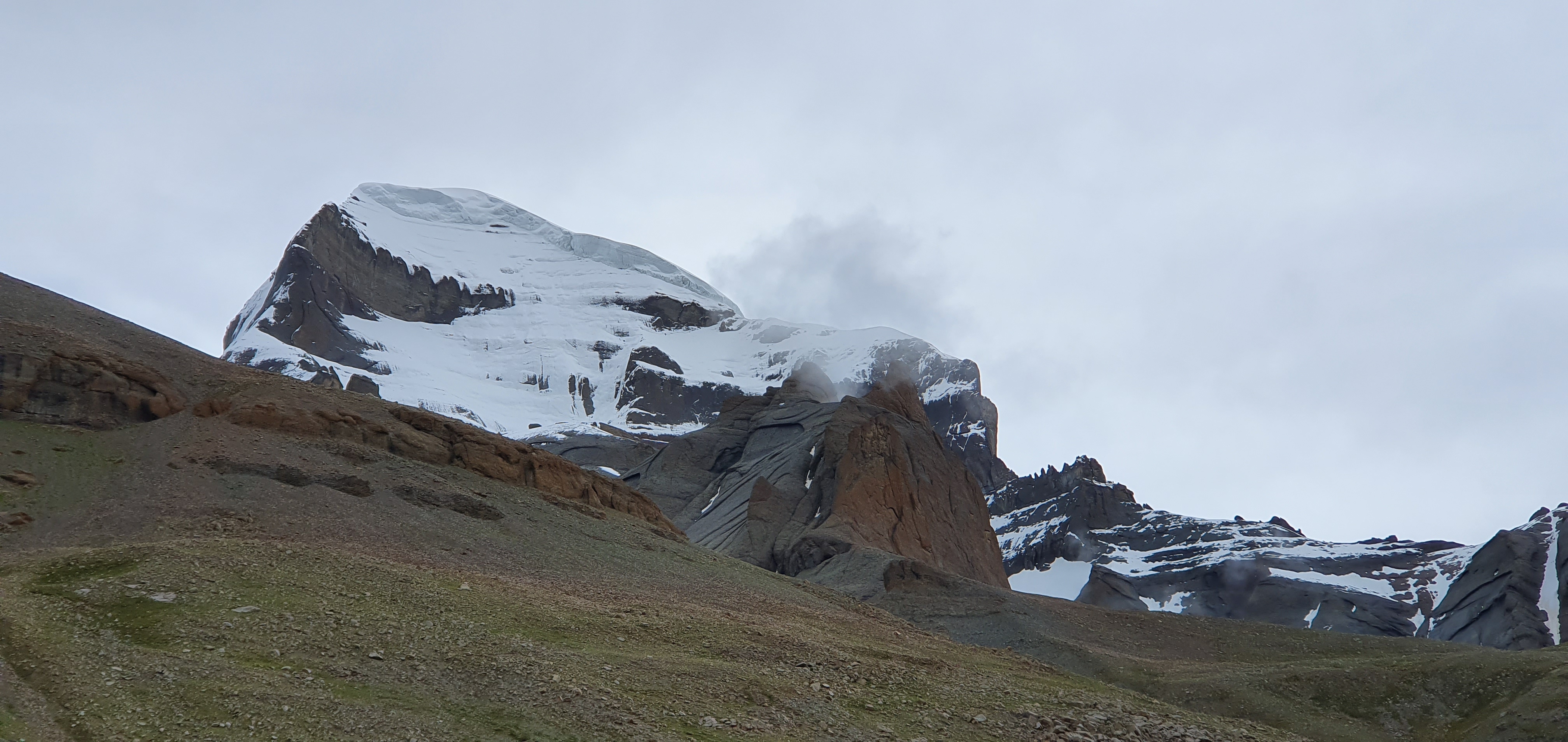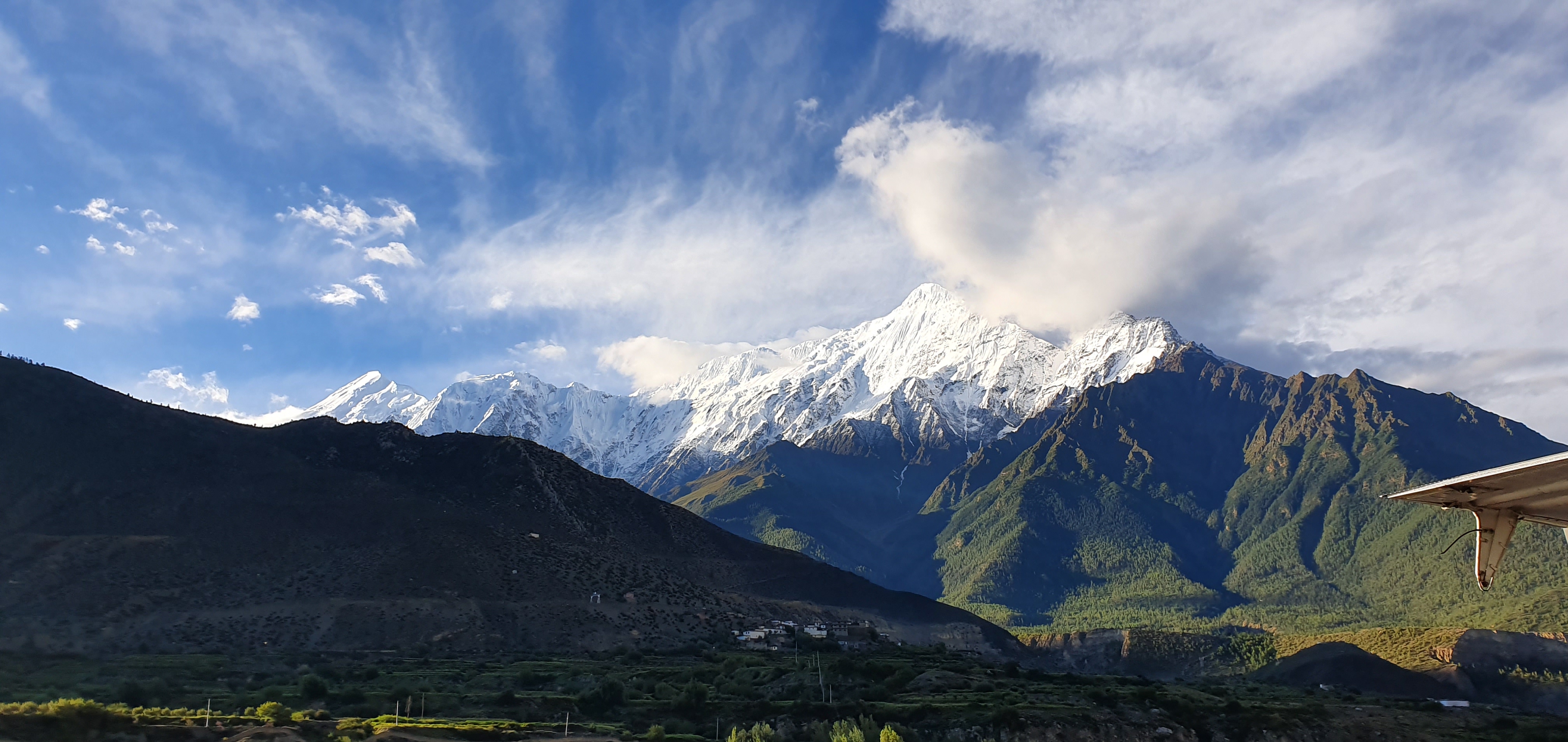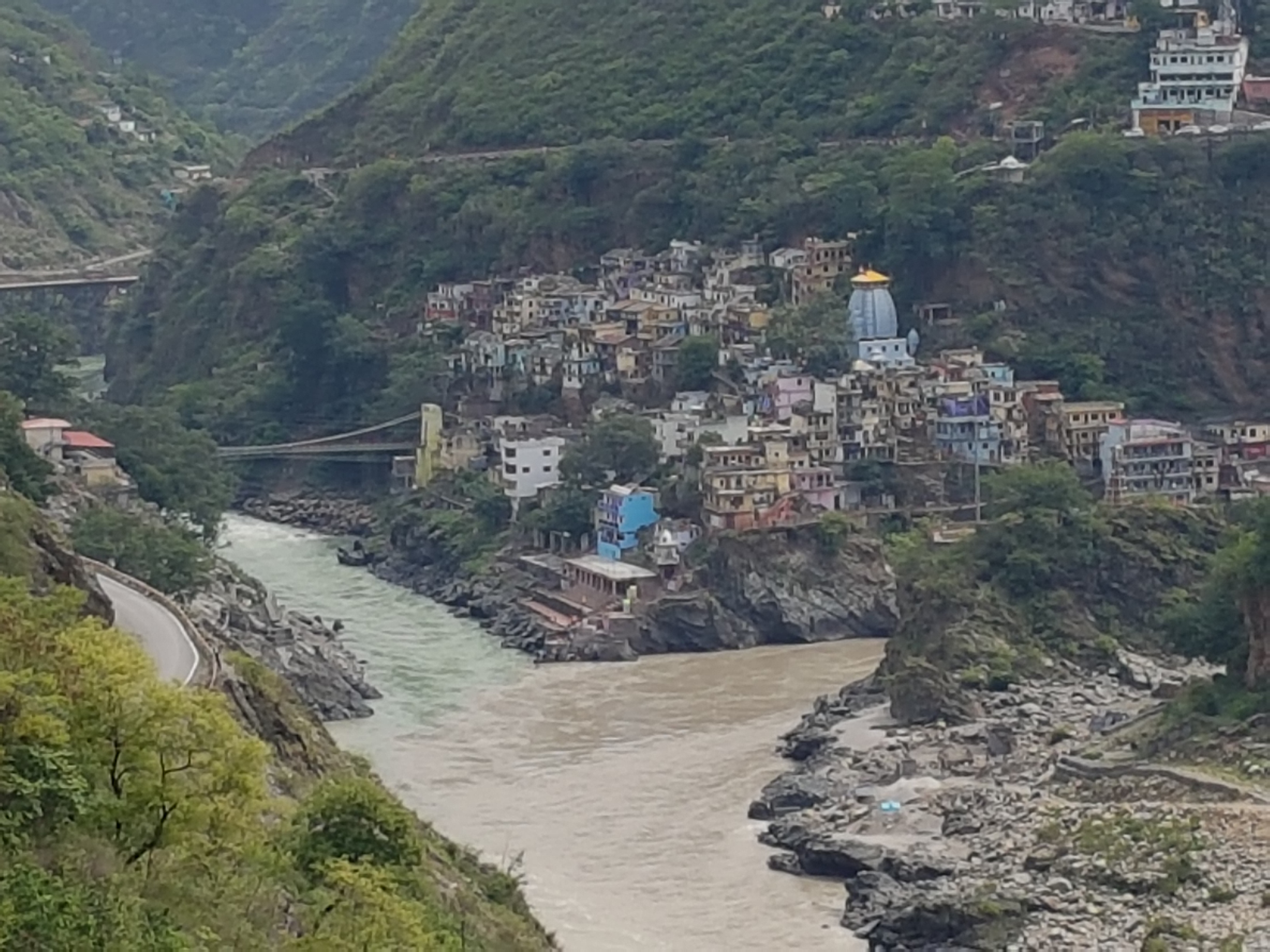Rigveda
Vedas are considered as the oldest literary corpus available today in the world. Vedas are also the base for each and every knowledge system that emerged in the Indian subcontinent. The term Veda means nothing but ‘pure knowledge’; it is derived from the root ‘Vid’ (to know) therefore Vedas are also known as ‘Śruti’ which means the knowledge that was handed over from a generation to the other through hearing. It is also believed that Vedas and their mantras were not written or made but were seen or discovered by the Rishi’s who were the ‘Draṣṭaras’ (or ‘Draṣṭās’) of the Mantras. Vedas are also known as ‘Amnaya’ which means the knowledge that can be grasped by practice only. These Vedas are four in numbers viz., Rigveda, Yajurveda, Samaveda and Atharvaveda.
Among these Vedas, Rigveda mainly contain different types of hymns in it: ‘Richayte Anena Iti Rik’ (that through which prayers are done is known as Rik). It is believed that, in ancient times, Rigveda had twenty-one ‘Śākhās’ or branches. But today, five Śākhās only are available and, among them, two are mostly used in India. Each Śākhā differ in the total number of Mantras it contains, in the number of hymns in it, in the way of chanting the Mantras and also in the way mantras are arranged. The five Śākhās are 1) Śākala Śākhā 2) Aśvalāyāna Śākhā 3) Bāṣkala Śākhā 4) Śaṅkhāyana Śākhā and 5) Māṇḍūkya Śākhā. But today, the Śākala Śākhā and Aśvalāyāna Śākhā seem to be one and the same in every aspect, this is true for Bāṣkala and Kausitiki too. As for the Śaṅkhāyana and Māṇḍūkya Śākhā, they are very rarely used today and it is very difficult to find out scholars chanting and teaching them.
In few places of Bharat-India, like Kerala, those who belong to Śākala Śākhā are known as Aśvalāyāna Śākhā, and those who belong to Bāṣkala Śākhā are also known as Kausitiki Śākhā.
Coming to the content of Rigveda, first of all, let us discuss the two types of Kramas or way of naming the content. The first is Maṇḍala Krama and the other is Aṣṭaka Krama. According to the first one, i.e. Maṇḍala Krama, the total Rigveda is divided into ten Maṇḍalas each having several Anuvākas, Sūktas and Mantras or Riks. According to this, in Rigveda there are ten Maṇḍalas (10), eighty-five Anuvākas (85), one thousand and seventeen Sūktas (1017) and ten thousand four hundred and seventy-two Mantras or Riks (10472).
In the second system, the Aṣṭaka Krama, there are Aṣṭakas, which are subdivided into Adhyāyas, Vargas and Mantras. In Rig Veda, there are eight Aṣṭakas, each Aṣṭakas having eight Adhyāyas therefore total sixty-four Adhyāyas, and each Adhyāya having twenty-four to fourty nine Vargas altogether -- so it comes to 2006 Vargas and 10472 Mantras.
The Rigveda starts with the Mantra “Agnimīḷe purohitaṃ yajñasya devam ṛtvijam - hotāraṃ ratnadhātamam” praising lord Agni. It ends with the Mantra “samānam astu vo mano yathā vaḥ susahāsati”, also praising lord Agni. Devatās like Indra, Rudra, Prajāpati, Vāyu, Varuna, Dyāvāpṛthivī, Viṣṇu, Sūrya, Candramas, Uṣas, Rātri, etc. are also praised in the Rig Veda hymns. Praising hymns like Agni and Rudra Sūkta, ritualistic hymns like Pavamāna Sūkta, philosophical hymns, poetical hymns like Uṣas and Rātri Sūkta, hymns related to family and other social structures like Kitava Sūkta can also be seen in Rigveda. There are also hymns aiming at driving away a number of diseases and illness and other forms of negativity.
There are also several Sūktas, as Kitava Sūkta, that speak about the issues of morality, right behavior, measures for good governance of a state and so on. Hymns explaining geographical features such as seasons, places can also be seen in Rigveda.
Maṇḍala Krama of Rigveda
As said earlier, in this system there are ten Maṇḍalas in Rigveda. Each Maṇḍala have several Rishis as ‘Mantra-Draṣṭās’ (seer of the mantra); each of the hymns given by these Rishis also corresponds to a specific deity.
In Maṇḍala one, there are 2006 Mantras in 191 Sūktas. The Rishis of first Maṇḍala are Madhuchanda Vaiśvamitra, Gautama, Medhaditi, etc. In Maṇḍala two, there are 429 Mantras in 43 Sūktas and the main Rishis are Gritsamada and his family. In Maṇḍala three, there are 617 Mantras in 62 Sūktas; here Viśvāmitra and his family members are the main Rishis. In the fourth Maṇḍala, Vāmadeva and his family are the main Rishis and there are 589 Mantras in 58 Sūktas. The fifth Maṇḍala consists of 87 Sūktas and a total of 727 Mantras; the main Rishis are Ātri and his family. The sixth Maṇḍala consists of 765 Mantras in 75 Sūktas in which the Bharadvājas are the main Rishis. The Maṇḍala seven contains 104 Sūktas and 841 Mantras having the Vasiṣṭhas as the main Rishis. Eight and Ninth Maṇḍala have 1716 & 1108 Mantras in 103 and 114 Sūktas respectively. In these two Maṇḍalas, the Kanvas, the Angirasas and Somadeva are some of the important Rishis. In Maṇḍala ten, there are 1754 Mantras in 191 Sūktas and the main Rishis who are the Draṣṭās of the Mantras are Vimata, Indra Sachi and so on.
Aṣṭaka Krama of Rigveda
There are eight Aṣṭakas as per Aṣṭakakrama in Rigveda. Every Aṣṭaka has eight Adhyāyas, ie a total of sixty four Adhyāyas. In the first Aṣṭaka, the eight Adhyāyas contain 37, 38, 35, 29, 31, 32, 37 & 26 Vargas respectively. In the second Aṣṭaka, the eight Adhyāyas are made of 26, 27, 26, 29, 29, 32, 25 & 27 Vargas respectively. The eight Adhyāyas of third Aṣṭaka contain 34, 26, 31, 25, 26, 30, 27 & 26 Vargas respectively. The eight Adhyāyas of the fourth Aṣṭaka are made of 33, 28, 31, 36, 30, 25, 35 & 32 vargas respectively. The fifth Aṣṭaka’s Adhyāyas consist of 27, 30, 30, 30, 27, 25, 33 & 36 Vargas respectively. In the Adhayas of the sixth Aṣṭakas, there are 40, 40, 49, 36, 38, 38, 39 & 33 Vargas respectively. In Aṣṭaka seven, the Adhayas respectively contain 41, 33, 26, 28, 33, 28, 30 & 29 Vargas. In the last Aṣṭaka, the Adhayas are respectively made of 30, 24, 28, 31, 27, 27, 30 and 49 Vargas.
Among the Vedic chanting styles, Kerala follows the Aṣṭaka Krama in a very straight way.
If we want to establish a correspondence between the Maṇḍala and Aṣtaka Krama: the first Maṇḍala finishes in the middle portion of the second Aṣtaka, the second Maṇḍala starts in the mid of the second Aṣtaka and finishes in the last part of the same second Aṣtaka. The third Maṇḍala starts in the very last part of Second Aṣtaka and ends in the fourth Adhyāya of third Aṣtaka. The famous Mantra ‘Gāyatrī’ appears in this portion (third Aṣtaka - Fourth Adhyāya – tenth Varga – last Mantra); here the Devatā is Savitā, the Rishi is Gathino Viśvāmitra and the Chandas is Gāyatrī itself. The fourth Maṇḍala starts from the fifth Adhyāya of third Aṣtaka and ends in the eighth Adhyāya. The Aṣtaka –Maṇḍala Kramas correspondence system goes forth this way. Some portions, like the mantras at the end of the fourth Aṣtaka, should be chanted in one stretch without giving any rest for the voice.
Śākala Śākhā and Bāṣkala Śākhā
Śākhā means branch or recension, and here the way of chanting as well as order of the different mantras differ. Though there are mainly 21 recensions of Rigveda, five are considered as major and among them only two are available now, Śākala or Aśvalāyāna Śākhā and Bāṣkala or Kauśītakī Śākhā. The former is widely practiced in the places like Maharastra, Karnataka, Tamilnadu, Odissa and Uttarpradesh. The Bāṣkala or Kauśītakī Śākhā and the Aśvalāyāna Śākhā are widely practiced in Kerala. The former has 1017 hymns and 11 other hymns known as Valakhilya hymns and thus totally making 1028 hymns; the later Śākhā has1025 hymns and 98 hymns as Khila (Appendix hymns).
Rigveda Brāhmaṇas
Brāhmaṇas are those texts that can be called as the ritualistic manual and texts that explain the practical use of Mantras in the Saṃhitā portion. Both the available Śākhās of Rigveda has their own Brāhmaṇas. The Brāhmaṇas of Rigveda are two in number: Aitareya Brāhmaṇa and Kausitiki Brāhmaṇa (also known as Sānkhyayāna Brāhmaṇa). The former belongs to the Śākala Śākhā and later to the Bāṣkala Śākhā.
Aitareya Brāhmaṇa is ascribed to Māhidasa Aitareya; it is divided into Pancikas, which are eight in number, and each Pancika is again divided into Adhyāyas, for a total of forty Adhyāyas. The first six parts or Pancikas explain about the Somayāga (Soma Sacrifice) and the remaining two explain the rituals connected to Rājyābhiṣeka.
Kausitiki Brāhmaṇa or Sānkhyayāna Brāhmaṇa is the Brāhmaṇa that belongs to the Bāṣkala Śākhā of Rigveda. The chapters of this Brāhmaṇa are called Khaṇḍas; there are a total of 226 Khaṇḍas. The first six chapters explain the Hairyajñas (Sacrifices connected with food) and the remaining ones explain the rituals connected to Somayāga. Besides these two topics, this text also contains the explanations about various Istis and Pasvalambana, etc.
Āraṇyakas of Rigveda
Āraṇyakas of Rigveda are also two in numbers and they have the same names as the Brāhmaṇas. The Aitareya Āraṇyaka belongs to Śākala Śākhā and Kousitiki Śākhā (or Sānkhyayāna Āraṇyaka) belongs to Bāṣkala Śākhā.
The Aitareya Āraṇyaka has five parts known as Āraṇyakas. Aitareya Āraṇyaka mainly deals with various rituals like different Vratas especially Mahavrata, with the importance of Upaniṣads and Uktas, the elucidation of the Rigvedic Saṃhitā, their different ways of chanting, the significance of Vedic sacrifices and so on. The last portions form the Āraṇyaka Aitareya Upaniṣad. This Āraṇyaka is attributed to Rishis like Mahidaśa Aitareya, Aśvalāyāna and Śaunaka etc.
The Kauśītakī or Sānkhyayāna Āraṇyaka belongs to the Bāṣkala recension of Rigveda. This Āraṇyaka mainly contains spiritualistic and ritualistic texts. There are fifteen chapters in this Āraṇyaka and many are similar to that of Aitareya Āraṇyaka. It also includes explanations about the Mahāvrata, the importance of Agnihotra, prayers connected to removal of illness, philosophical thoughts, importance of faith, etc. The third to fifth portions of this Āraṇyaka form the Kauśītakī Upaniṣad.
Upaniṣads of Rigveda
Aitareya Upaniṣad and Kauśītakī Upaniṣad are the two Upaniṣads of Rigveda. Aitareya Upaniṣad is considered as the oldest among the Mukhya (major) Upaniṣads of Vedic literature.
This Aitareya Upaniṣad comes in Aitareya Āraṇyaka. It explains the philosophy of life from birth, death, rebirth, creation, destruction, soul etc. This also tells that the ‘Brahman’ is the ultimate reality in the world and also explains about the importance of Brahman and Its manifestation. It is divided into three chapters with a total of thirty-three verses.
The Kauśītakī Upaniṣad appears in the Kauśītakī Āraṇyaka. It explains the rebirth or the transmigration of an Ātman (soul), describes the Brahman as the Ultimate self, gives the philosophical principle of Ātman or soul, and affirms the unity of individual ātman with the Ultimate one etc. It is divided into four chapters and contains forty-seven verses.
******************
Article Prepared by :
Shri Sivanandan V P
Former Student (Poorva Vidyarthi)
Brahmaswom Mattom Veda Pathashala
Thrissur, Kerala, India
Among these Vedas, Rigveda mainly contain different types of hymns in it: ‘Richayte Anena Iti Rik’ (that through which prayers are done is known as Rik). It is believed that, in ancient times, Rigveda had twenty-one ‘Śākhās’ or branches. But today, five Śākhās only are available and, among them, two are mostly used in India. Each Śākhā differ in the total number of Mantras it contains, in the number of hymns in it, in the way of chanting the Mantras and also in the way mantras are arranged. The five Śākhās are 1) Śākala Śākhā 2) Aśvalāyāna Śākhā 3) Bāṣkala Śākhā 4) Śaṅkhāyana Śākhā and 5) Māṇḍūkya Śākhā. But today, the Śākala Śākhā and Aśvalāyāna Śākhā seem to be one and the same in every aspect, this is true for Bāṣkala and Kausitiki too. As for the Śaṅkhāyana and Māṇḍūkya Śākhā, they are very rarely used today and it is very difficult to find out scholars chanting and teaching them.
In few places of Bharat-India, like Kerala, those who belong to Śākala Śākhā are known as Aśvalāyāna Śākhā, and those who belong to Bāṣkala Śākhā are also known as Kausitiki Śākhā.
Coming to the content of Rigveda, first of all, let us discuss the two types of Kramas or way of naming the content. The first is Maṇḍala Krama and the other is Aṣṭaka Krama. According to the first one, i.e. Maṇḍala Krama, the total Rigveda is divided into ten Maṇḍalas each having several Anuvākas, Sūktas and Mantras or Riks. According to this, in Rigveda there are ten Maṇḍalas (10), eighty-five Anuvākas (85), one thousand and seventeen Sūktas (1017) and ten thousand four hundred and seventy-two Mantras or Riks (10472).
In the second system, the Aṣṭaka Krama, there are Aṣṭakas, which are subdivided into Adhyāyas, Vargas and Mantras. In Rig Veda, there are eight Aṣṭakas, each Aṣṭakas having eight Adhyāyas therefore total sixty-four Adhyāyas, and each Adhyāya having twenty-four to fourty nine Vargas altogether -- so it comes to 2006 Vargas and 10472 Mantras.
The Rigveda starts with the Mantra “Agnimīḷe purohitaṃ yajñasya devam ṛtvijam - hotāraṃ ratnadhātamam” praising lord Agni. It ends with the Mantra “samānam astu vo mano yathā vaḥ susahāsati”, also praising lord Agni. Devatās like Indra, Rudra, Prajāpati, Vāyu, Varuna, Dyāvāpṛthivī, Viṣṇu, Sūrya, Candramas, Uṣas, Rātri, etc. are also praised in the Rig Veda hymns. Praising hymns like Agni and Rudra Sūkta, ritualistic hymns like Pavamāna Sūkta, philosophical hymns, poetical hymns like Uṣas and Rātri Sūkta, hymns related to family and other social structures like Kitava Sūkta can also be seen in Rigveda. There are also hymns aiming at driving away a number of diseases and illness and other forms of negativity.
There are also several Sūktas, as Kitava Sūkta, that speak about the issues of morality, right behavior, measures for good governance of a state and so on. Hymns explaining geographical features such as seasons, places can also be seen in Rigveda.
Maṇḍala Krama of Rigveda
As said earlier, in this system there are ten Maṇḍalas in Rigveda. Each Maṇḍala have several Rishis as ‘Mantra-Draṣṭās’ (seer of the mantra); each of the hymns given by these Rishis also corresponds to a specific deity.
In Maṇḍala one, there are 2006 Mantras in 191 Sūktas. The Rishis of first Maṇḍala are Madhuchanda Vaiśvamitra, Gautama, Medhaditi, etc. In Maṇḍala two, there are 429 Mantras in 43 Sūktas and the main Rishis are Gritsamada and his family. In Maṇḍala three, there are 617 Mantras in 62 Sūktas; here Viśvāmitra and his family members are the main Rishis. In the fourth Maṇḍala, Vāmadeva and his family are the main Rishis and there are 589 Mantras in 58 Sūktas. The fifth Maṇḍala consists of 87 Sūktas and a total of 727 Mantras; the main Rishis are Ātri and his family. The sixth Maṇḍala consists of 765 Mantras in 75 Sūktas in which the Bharadvājas are the main Rishis. The Maṇḍala seven contains 104 Sūktas and 841 Mantras having the Vasiṣṭhas as the main Rishis. Eight and Ninth Maṇḍala have 1716 & 1108 Mantras in 103 and 114 Sūktas respectively. In these two Maṇḍalas, the Kanvas, the Angirasas and Somadeva are some of the important Rishis. In Maṇḍala ten, there are 1754 Mantras in 191 Sūktas and the main Rishis who are the Draṣṭās of the Mantras are Vimata, Indra Sachi and so on.
Aṣṭaka Krama of Rigveda
There are eight Aṣṭakas as per Aṣṭakakrama in Rigveda. Every Aṣṭaka has eight Adhyāyas, ie a total of sixty four Adhyāyas. In the first Aṣṭaka, the eight Adhyāyas contain 37, 38, 35, 29, 31, 32, 37 & 26 Vargas respectively. In the second Aṣṭaka, the eight Adhyāyas are made of 26, 27, 26, 29, 29, 32, 25 & 27 Vargas respectively. The eight Adhyāyas of third Aṣṭaka contain 34, 26, 31, 25, 26, 30, 27 & 26 Vargas respectively. The eight Adhyāyas of the fourth Aṣṭaka are made of 33, 28, 31, 36, 30, 25, 35 & 32 vargas respectively. The fifth Aṣṭaka’s Adhyāyas consist of 27, 30, 30, 30, 27, 25, 33 & 36 Vargas respectively. In the Adhayas of the sixth Aṣṭakas, there are 40, 40, 49, 36, 38, 38, 39 & 33 Vargas respectively. In Aṣṭaka seven, the Adhayas respectively contain 41, 33, 26, 28, 33, 28, 30 & 29 Vargas. In the last Aṣṭaka, the Adhayas are respectively made of 30, 24, 28, 31, 27, 27, 30 and 49 Vargas.
Among the Vedic chanting styles, Kerala follows the Aṣṭaka Krama in a very straight way.
If we want to establish a correspondence between the Maṇḍala and Aṣtaka Krama: the first Maṇḍala finishes in the middle portion of the second Aṣtaka, the second Maṇḍala starts in the mid of the second Aṣtaka and finishes in the last part of the same second Aṣtaka. The third Maṇḍala starts in the very last part of Second Aṣtaka and ends in the fourth Adhyāya of third Aṣtaka. The famous Mantra ‘Gāyatrī’ appears in this portion (third Aṣtaka - Fourth Adhyāya – tenth Varga – last Mantra); here the Devatā is Savitā, the Rishi is Gathino Viśvāmitra and the Chandas is Gāyatrī itself. The fourth Maṇḍala starts from the fifth Adhyāya of third Aṣtaka and ends in the eighth Adhyāya. The Aṣtaka –Maṇḍala Kramas correspondence system goes forth this way. Some portions, like the mantras at the end of the fourth Aṣtaka, should be chanted in one stretch without giving any rest for the voice.
Śākala Śākhā and Bāṣkala Śākhā
Śākhā means branch or recension, and here the way of chanting as well as order of the different mantras differ. Though there are mainly 21 recensions of Rigveda, five are considered as major and among them only two are available now, Śākala or Aśvalāyāna Śākhā and Bāṣkala or Kauśītakī Śākhā. The former is widely practiced in the places like Maharastra, Karnataka, Tamilnadu, Odissa and Uttarpradesh. The Bāṣkala or Kauśītakī Śākhā and the Aśvalāyāna Śākhā are widely practiced in Kerala. The former has 1017 hymns and 11 other hymns known as Valakhilya hymns and thus totally making 1028 hymns; the later Śākhā has1025 hymns and 98 hymns as Khila (Appendix hymns).
Rigveda Brāhmaṇas
Brāhmaṇas are those texts that can be called as the ritualistic manual and texts that explain the practical use of Mantras in the Saṃhitā portion. Both the available Śākhās of Rigveda has their own Brāhmaṇas. The Brāhmaṇas of Rigveda are two in number: Aitareya Brāhmaṇa and Kausitiki Brāhmaṇa (also known as Sānkhyayāna Brāhmaṇa). The former belongs to the Śākala Śākhā and later to the Bāṣkala Śākhā.
Aitareya Brāhmaṇa is ascribed to Māhidasa Aitareya; it is divided into Pancikas, which are eight in number, and each Pancika is again divided into Adhyāyas, for a total of forty Adhyāyas. The first six parts or Pancikas explain about the Somayāga (Soma Sacrifice) and the remaining two explain the rituals connected to Rājyābhiṣeka.
Kausitiki Brāhmaṇa or Sānkhyayāna Brāhmaṇa is the Brāhmaṇa that belongs to the Bāṣkala Śākhā of Rigveda. The chapters of this Brāhmaṇa are called Khaṇḍas; there are a total of 226 Khaṇḍas. The first six chapters explain the Hairyajñas (Sacrifices connected with food) and the remaining ones explain the rituals connected to Somayāga. Besides these two topics, this text also contains the explanations about various Istis and Pasvalambana, etc.
Āraṇyakas of Rigveda
Āraṇyakas of Rigveda are also two in numbers and they have the same names as the Brāhmaṇas. The Aitareya Āraṇyaka belongs to Śākala Śākhā and Kousitiki Śākhā (or Sānkhyayāna Āraṇyaka) belongs to Bāṣkala Śākhā.
The Aitareya Āraṇyaka has five parts known as Āraṇyakas. Aitareya Āraṇyaka mainly deals with various rituals like different Vratas especially Mahavrata, with the importance of Upaniṣads and Uktas, the elucidation of the Rigvedic Saṃhitā, their different ways of chanting, the significance of Vedic sacrifices and so on. The last portions form the Āraṇyaka Aitareya Upaniṣad. This Āraṇyaka is attributed to Rishis like Mahidaśa Aitareya, Aśvalāyāna and Śaunaka etc.
The Kauśītakī or Sānkhyayāna Āraṇyaka belongs to the Bāṣkala recension of Rigveda. This Āraṇyaka mainly contains spiritualistic and ritualistic texts. There are fifteen chapters in this Āraṇyaka and many are similar to that of Aitareya Āraṇyaka. It also includes explanations about the Mahāvrata, the importance of Agnihotra, prayers connected to removal of illness, philosophical thoughts, importance of faith, etc. The third to fifth portions of this Āraṇyaka form the Kauśītakī Upaniṣad.
Upaniṣads of Rigveda
Aitareya Upaniṣad and Kauśītakī Upaniṣad are the two Upaniṣads of Rigveda. Aitareya Upaniṣad is considered as the oldest among the Mukhya (major) Upaniṣads of Vedic literature.
This Aitareya Upaniṣad comes in Aitareya Āraṇyaka. It explains the philosophy of life from birth, death, rebirth, creation, destruction, soul etc. This also tells that the ‘Brahman’ is the ultimate reality in the world and also explains about the importance of Brahman and Its manifestation. It is divided into three chapters with a total of thirty-three verses.
The Kauśītakī Upaniṣad appears in the Kauśītakī Āraṇyaka. It explains the rebirth or the transmigration of an Ātman (soul), describes the Brahman as the Ultimate self, gives the philosophical principle of Ātman or soul, and affirms the unity of individual ātman with the Ultimate one etc. It is divided into four chapters and contains forty-seven verses.
******************
Article Prepared by :
Shri Sivanandan V P
Former Student (Poorva Vidyarthi)
Brahmaswom Mattom Veda Pathashala
Thrissur, Kerala, India
Subsribe our package to Read Full
Subscribe Now
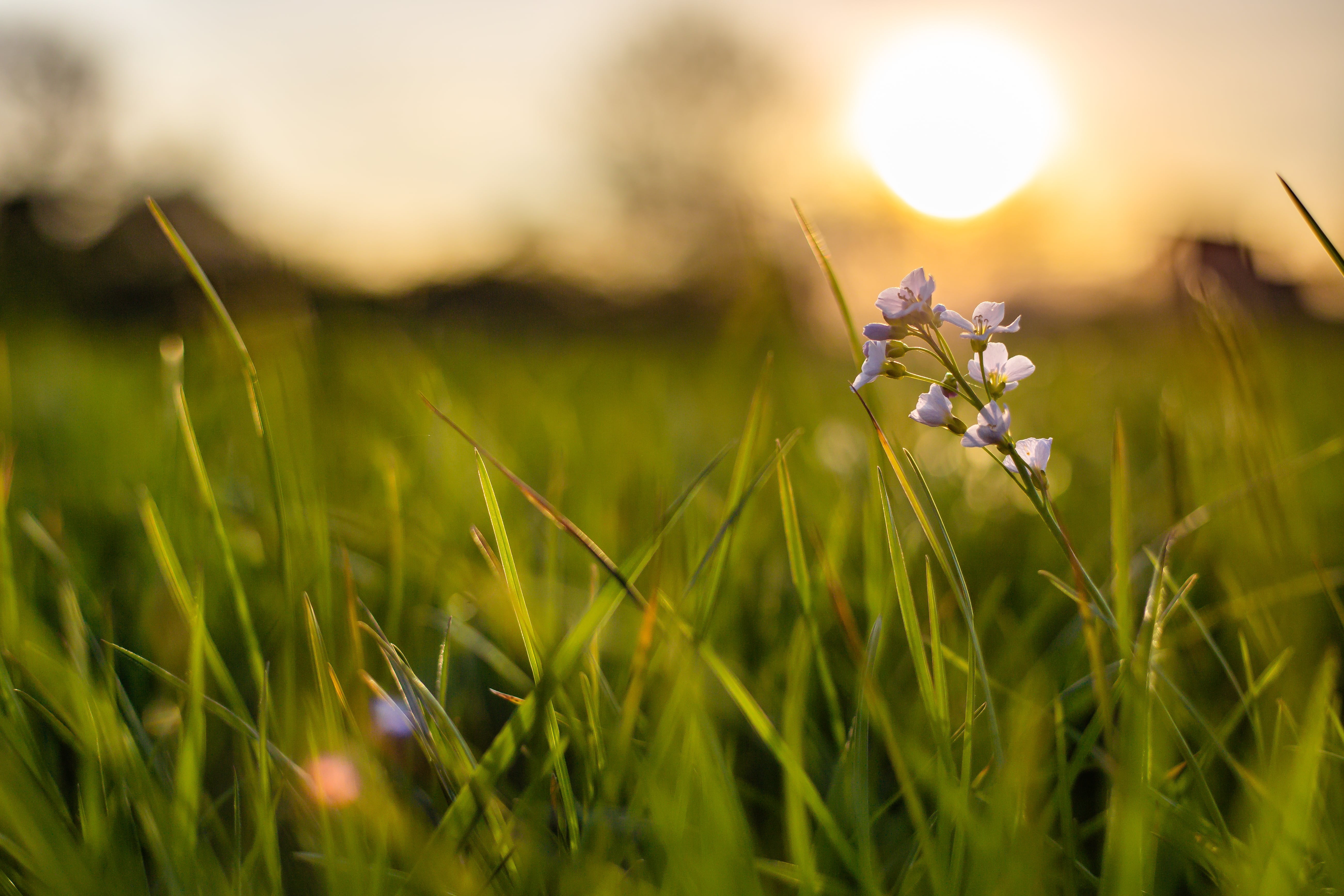
?>resources/frontend/assets/images/4.jpg)
